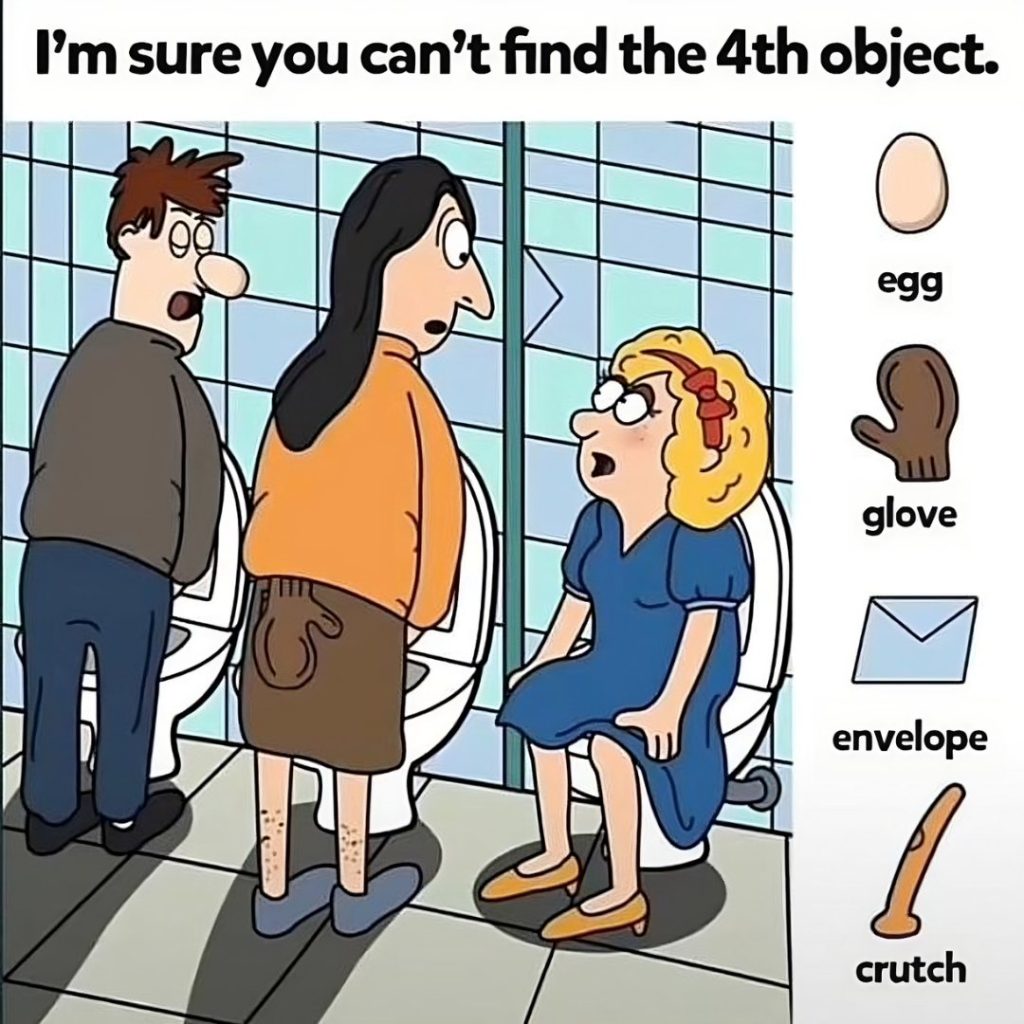The internet is buzzing with a new challenge that’s putting our perception and patience to the test. Dubbed “I’m sure you can’t find the 4th object,” this viral picture puzzle is taking over social media and leaving viewers baffled. The image invites you to find four hidden objects—a glove, an egg, an envelope, and a crutch. While the first three items might be tough to spot, it’s the elusive crutch that has people around the world scratching their heads. So, what’s the deal with this tricky puzzle, and why can’t anyone seem to find that last item?
Why Are These Visual Puzzles So Captivating?

In a world filled with quick content and constant notifications, puzzles like this one provide a refreshing mental escape. They tap into our competitive spirit and give us a chance to prove our observational skills. Challenges like these thrive on platforms like TikTok and Instagram, where users share their wins, frustrations, and theories. Much like Wordle and other online brainteasers, they’re designed to grab attention, spark curiosity, and keep us coming back for more.
At first glance, this puzzle looks simple: a straightforward scene with three people in a restroom, a list of items to find, and the promise of a challenge. But the puzzle quickly reveals itself to be a clever game of misdirection. Let’s break down the process of solving this puzzle and get to the bottom of why the fourth item remains so elusive.
Analyzing the Puzzle: Finding the First Three Objects
The image is carefully constructed to throw you off at every turn. Here’s a breakdown of where the objects are hidden and why they’re so hard to spot:
The Egg: A Camouflaged Surprise
The egg is small and cleverly placed, blending in so well that many people miss it on their first (or fifth) attempt. If you look closely, you’ll spot the egg balanced on the nose of the person standing on the left. This unusual placement and the egg’s small size make it easy to overlook, especially since it’s in a place where you wouldn’t expect to find one.
The Glove: Hiding in Plain Sight
The glove might be even trickier to locate. It’s brown and partially blends in with the skirt of the person in the middle. Since the color and shape don’t stand out immediately, you have to scan the image carefully to notice the glove, which is nestled so naturally in the fabric that it looks like part of the clothing.
The Envelope: A Well-Camouflaged Item
The envelope is perhaps the most challenging of the three visible objects. Turned sideways and matched to the color of the bathroom tiles, it’s camouflaged against the wall. The orientation makes it appear as part of the background, and without a keen eye, you might completely miss it. This clever placement plays on our tendency to assume the background is static, which is why so many people overlook it.
The Missing Fourth Object: Where’s the Crutch?
@stickydice Were is the crutch? Heres the answer
So, you’ve found the egg, the glove, and the envelope, but where is the crutch? Here’s where the puzzle takes a mischievous turn: there is no crutch in the picture at all.
This is a classic example of a visual trick designed to keep viewers engaged—and frustrated. By adding an item that isn’t actually in the picture, the puzzle creator injects an extra layer of mystery. People spend ages scouring the image, convinced they’ve missed something, only to feel perplexed when they can’t locate the crutch. But that’s the point. This part of the puzzle is intentionally misleading, serving as a test of how long you’ll look before questioning if there’s even a crutch there to begin with.
The Genius of Social Media Puzzles
The crutch’s absence isn’t just a mistake; it’s a deliberate tactic used by the puzzle creator. On some platforms, the creator even hints at the solution, suggesting viewers “tap the + to see it.” This trick entices people to follow the account, only to realize that following won’t reveal anything more. It’s a clever strategy to boost engagement, using curiosity and a touch of frustration to capture attention.
Many viral challenges rely on this tactic, especially on social media. By creating a mini-controversy and sparking discussions, the missing crutch serves as bait, encouraging people to share the puzzle with friends and debate its solution. This not only increases views but also plays into our natural desire to solve a mystery.
Why We Fall for These Tricks
The missing crutch works as a clever example of how our minds can be influenced by expectation. When we’re told to look for something, we tend to assume it’s there, even if we can’t find it. This tendency to trust the puzzle’s instructions leads many people to overlook the possibility that the item simply doesn’t exist. It’s a reminder that sometimes, the key to solving a puzzle is to question our assumptions and think outside the box.
Conclusion: Enjoy the Challenge and Stay Curious
So, did you spot the crutch? If not, don’t worry—you’re in good company. The missing crutch is a lighthearted reminder that not every puzzle has a straightforward answer. Next time you tackle a challenge like this, remember to stay curious and question your assumptions. Whether you solve it or not, the thrill of the hunt and the joy of sharing your experience are what make these viral puzzles so enjoyable.

